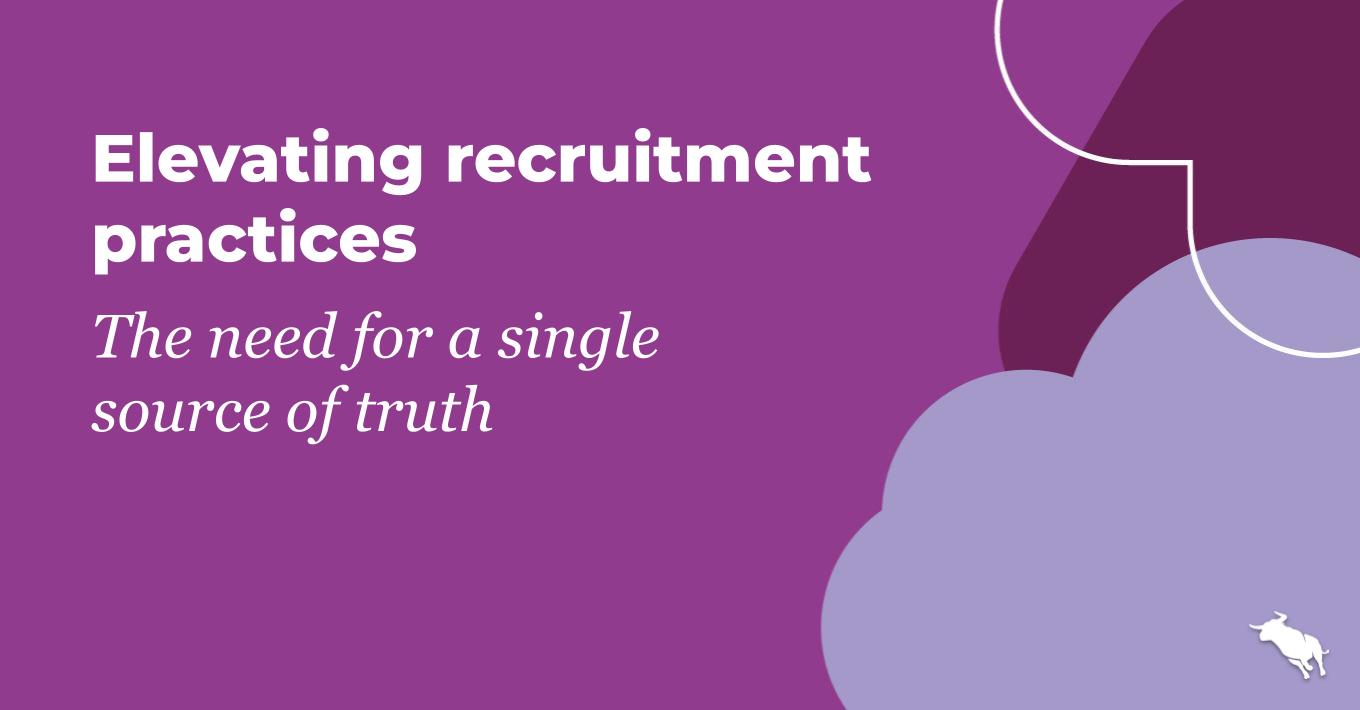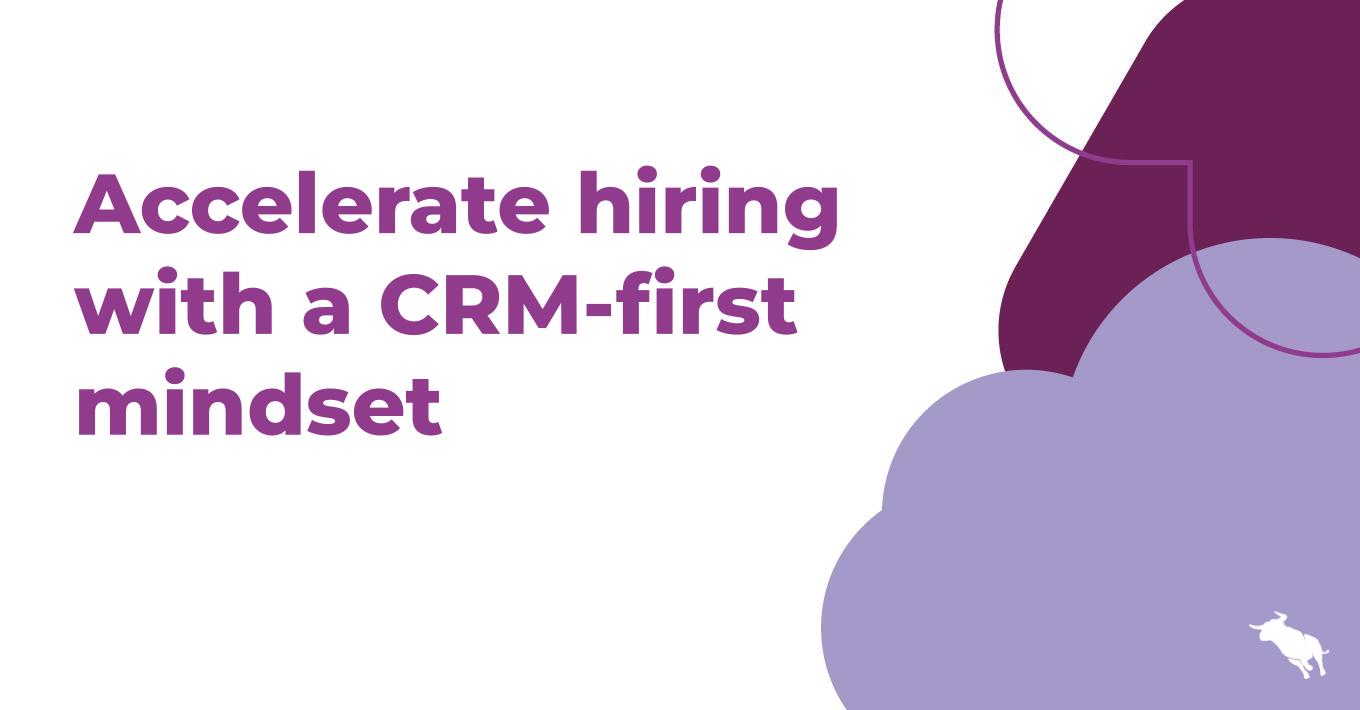Stakes Are Changing for Mid-Tier Staffing Firms – Here’s Why
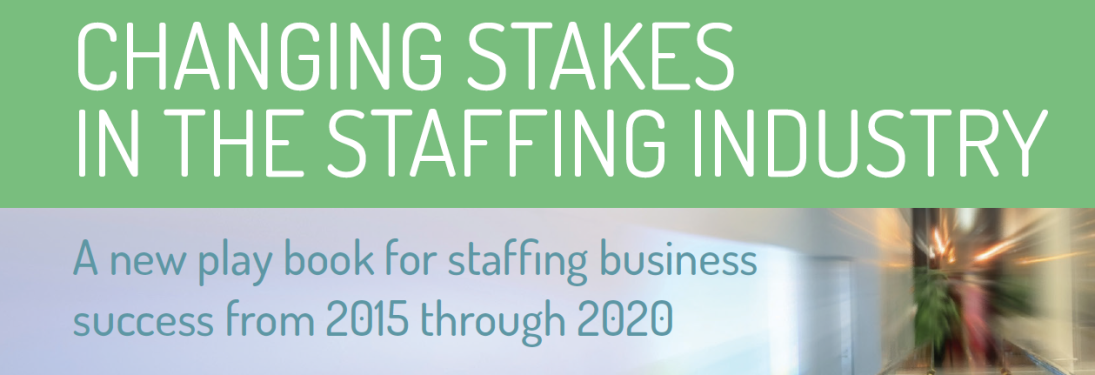
Jack Welch, former CEO of GE, once said, “Change before you have to.” Sage advice, especially for businesses in mature industries where forces of change are gathering imperceptibly.
I am going to wager that the staffing industry is one these industries. Moreover, I’ll wager that mid-sized staffing firms are highly vulnerable. By mid-sized staffing firms, I mean staffing firms that generally fall below those firms that make up 50% of the market in terms of revenue, have a business footprint of multiple branch offices (domestic, not international), and have businesses almost entirely composed of temp and recruiting revenues (e.g. not SOW, MSP, et al.).
I am going to elaborate below, and I’ll evoke Jack Welch a few more times.
But Times Are Good
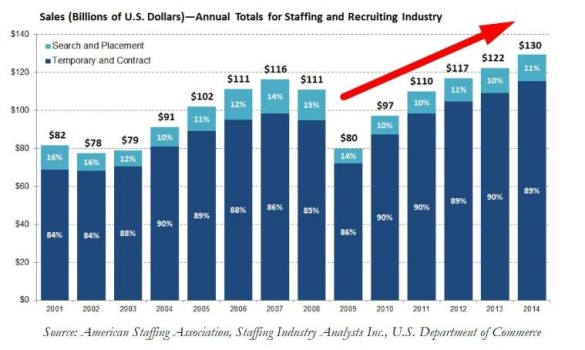
Indeed, as the chart suggests, the times have been good.
Fueled by a recovering economy, companies (after the Great Recession and facing an increasingly competitive and changing business environment) have started to use a flexible, contingent workforce more and more. And temp staffing firms have been experiencing significant growth, so it’s easy to become complacent. Many staffing firm CEOs may be prepared for another typical cyclical downturn. But what if there are also other challenges coming as a result of other changes?
The New Normal?
A number of underlying, trending forces may be changing the game ahead. Here are a few examples:
- Contingent workforce programs are becoming more and more effective at extracting cost reductions and consolidating their supply base. The result: staffing firm margins are compressed, and more staffing firms are excluded from the 1st – and even 2nd – tier of suppliers.
- VMS technology is becoming more pervasive and is greatly assisting contingent workforce programs in the achievement of their goals. Moreover, VMS makes additional demands on staffing firms: to perform faster and to subject themselves to intense competition with their peers. Staffing firms must adopt lean, agile operations models (optimization) to stay in the game.
- In general, information and communications technology has been changing everything everywhere, sometimes creating new business models that completely change how services are realized, if not disrupting entire industries (Uber is a classic example of both).
- As technology comes into the picture, people’s expectations of what is possible, desirable, or necessary change. To achieve their goals, they want new ways of doing things that are easier, faster, and more economical. No one wants to stand in a line at a bank branch if they can do what they need to do at an ATM, on a computer, or on a mobile device.
What Does This All Mean for the Staffing Industry?
First of all, staffing businesses are being controlled, commoditized, and squeezed to the extent that the existing business models are approaching unprofitability. It’s a bit of a vicious circle: the more staffing firms focus on optimizing their existing business models, the more myopic they become and the more they allocate resources in directions that eventually lead to a lower ROI than less familiar alternatives.
Secondly, technology poses a threat to existing business and service models by enabling efficient new models that can meet and even create demand for new types of services and recruiting solutions. At the same time, technology creates new opportunities for staffing businesses to innovate and reinvent themselves. Cost is not a barrier, because many new technologies do not require large, risky investments. The cloud has yielded “as-a-Service” technology solutions that are less expensive and do not require large investment. The challenge for staffing businesses is to have the competence to make use of the technology.
Jack Welch also said, “Control your own destiny or someone else will.” In this case, “someone else” is your client, its contingent workforce management programs, and VMS, which disintermediates staffing firms and their clients. New technology is also constantly flooding in and washing over programs, creating newly possible workforce solutions that business users can consume directly. But staffing firms must be able to harness this new technology and use it to their strategic benefit to support innovation, not just to optimize their existing operations. In short, staffing firms must use technology to control their own destinies, “or someone else will.”
What Does the Future Look Like?
For many staffing firms, the future is SOW (statement of work) – if they can get there, that is. But many small and mid-sized staffing firms can’t get there, and they never will. However, could that could play to their advantage? SOW looks like a great opportunity now that it’s in a high-growth phase, and contingent workforce programs are still adapting to it. But SOW is really just playing back into the hands of those same contingent workforce programs. They’re additional targets for further commoditization, shifting risk and efficiency demands back on staffing firms. The cycle will play out in a few years. We can evoke Jack Welch again, who said: “Any jerk can have short-term earnings. You squeeze, squeeze, squeeze, and the company sinks five years later.”
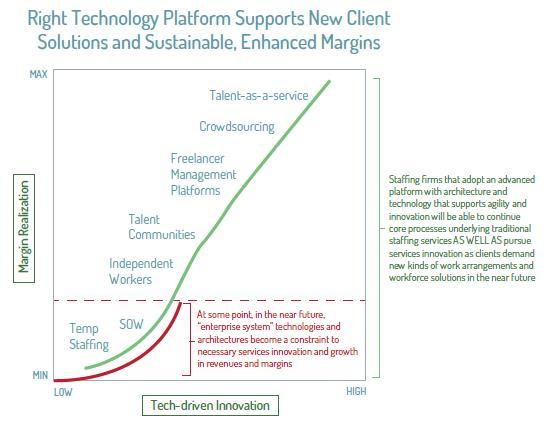
Staffing firms that start to scan the environment more broadly and put the pieces of the puzzle together (trends in technology, user demands, demographics, and possible workforce solutions) will start to see a different future that is already emerging and begin to “think different” about their opportunity horizon. New kinds of workforce solutions, such as on-demand labor, online projects, and crowdsourcing can set a bar, but even other less radical solutions can be supported if the technology can be harnessed.
But to make it to this future, staffing firms must be able to both continue to optimize their existing business models and shift their focus and resources to new technology and innovation. On this challenge, Jack Welch weighs in again: “You’ve got to eat while you dream. You’ve got to deliver on short-range commitments, while you develop a long-range strategy and vision and implement it. The success of doing both – walking and chewing gum, if you will. Getting it done in the short-range, and delivering a long-range plan, and executing on that.”
Summing it up in one phrase, walking and chewing gum at the same time – that is the challenge that staffing firms face in the coming years. And for those that can’t, the future will be a short-term future.
Why Are Mid-Sized Firms the Most Vulnerable?
Large staffing firms may have to deal with the typical disadvantages of large, cumbersome organizations, but there are ways of getting around the threats and opportunities they face. For example: some split off innovative next-stage business units from their traditional staffing business, some create separate investment funds to invest in leading-edge companies, and others acquire companies with new models to merge them into specific business units. I’m thinking of KellyOCG, Randstad Innovation Fund, and Adecco’s acquisition of OnForce. Despite some weaknesses, large staffing business have global scale, liquidity, access to capital, and plentiful resources to devote to innovative technology. Granted, some large staffing companies will not withstand the winds of change, and they could be subject to consolidation. But by and large, large staffing companies are safer than smaller firms.
Smaller staffing firms, meanwhile, have the advantages that come with not having the fixed cost of extended branch office networks. Additionally, because of these small firms’ size, they can be agile. Some of these firms will figure out how to pivot and many will find their local niche, but the majority will run their inevitable course, independent of coming changes. They won’t be able to walk and chew gum at the same time.
Mid-sized staffing firms, however, are between somewhat of a rock and a hard place. They don’t have the size-based advantages that large staffing firms have. They tend to be severe optimizers of their current business and operating models. Most are not leaders in technology adoption. And they typically do not have access to inside or outside capital. One of their most crucial assets, their extended branch networks, can become fixed cost liabilities. These all add up to significant vulnerabilities.
However, the future may not be so bleak. Some mid-sized firms will be able to learn to walk and chew gum at the same time, but they have to start immediately. They must start to reallocate resources from traditional business optimization to envisioning, planning, and executing their future business by trying to get to an 80/20 ratio over the next fiscal year, then increasing from there. This will include turning new technology into a competitive, strategic asset (something that can be accomplished with the right technology partners). Finally, mid-sized firms will need strong leadership that not only combines vision and execution capabilities, but can also transform an organization in a relatively short span of years. As Jack Welch once said, “An organization’s ability to learn, and translate that learning into action rapidly, is the ultimate competitive advantage.”
Download my free report now to learn more about how you can shape your staffing business for success over the next five years and well into the future: Changing Stakes in the Staffing Industry.

